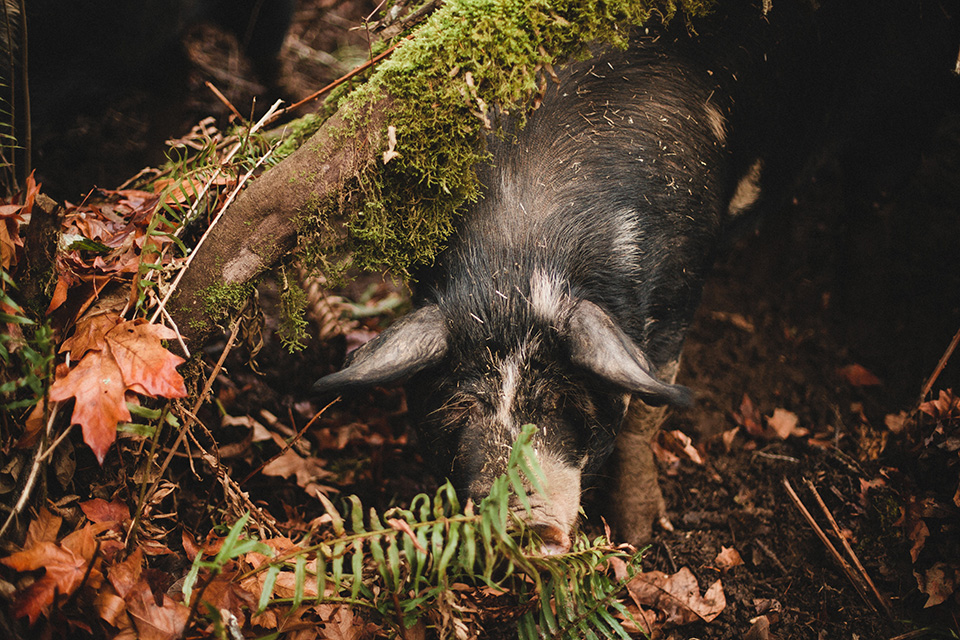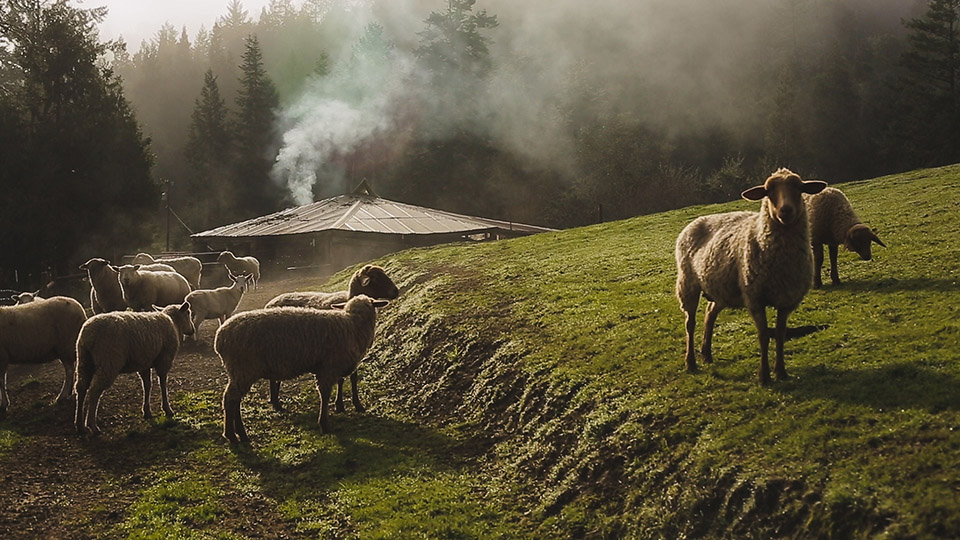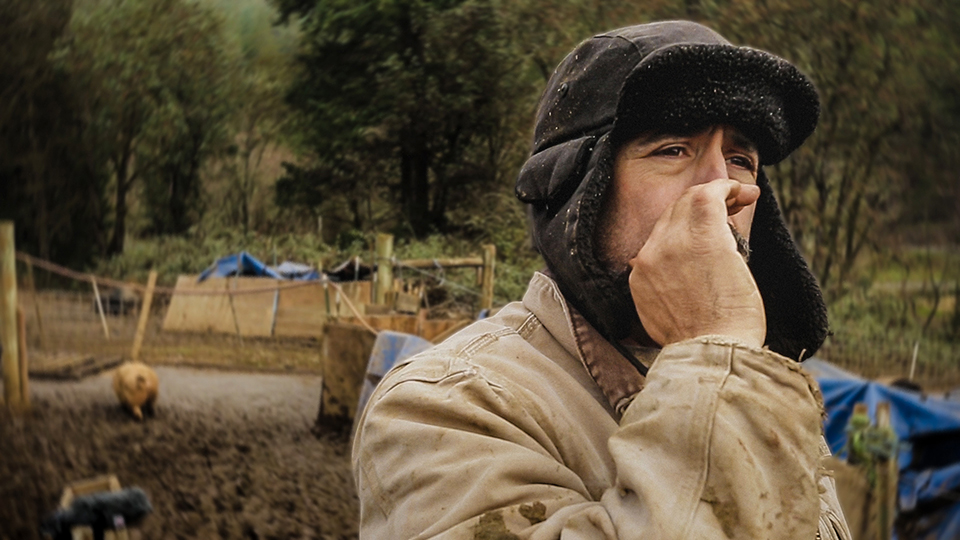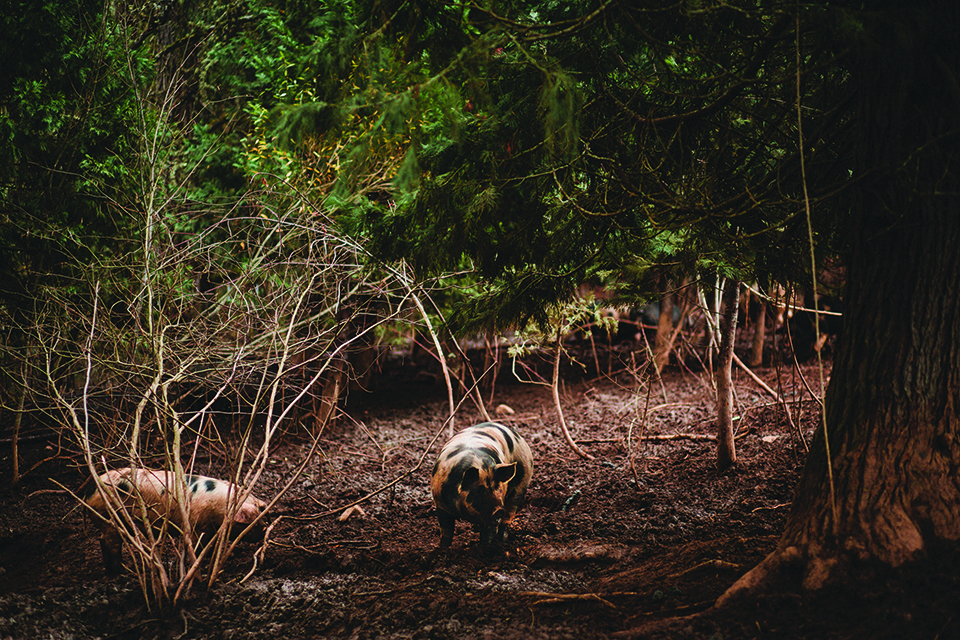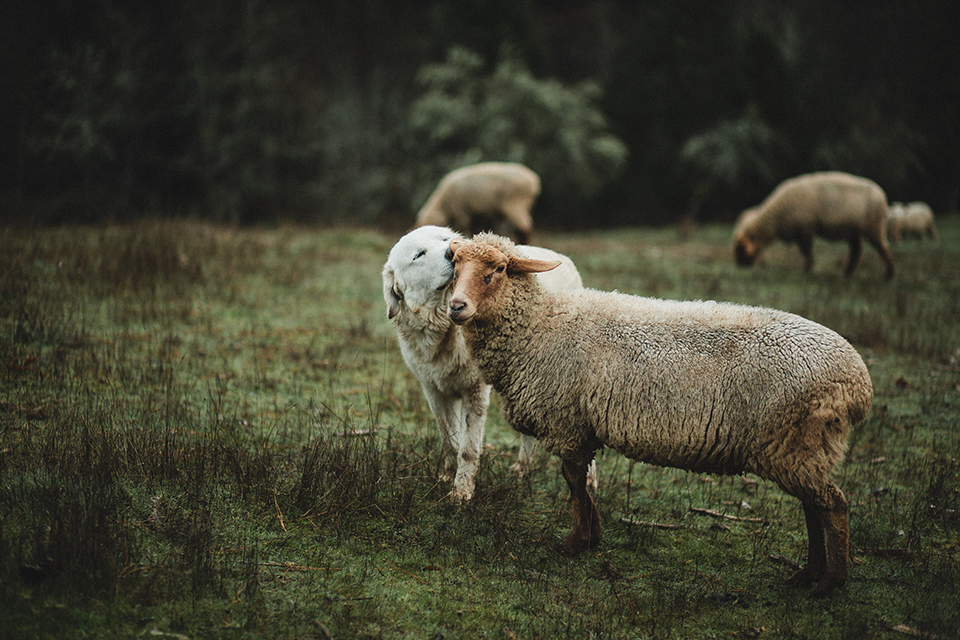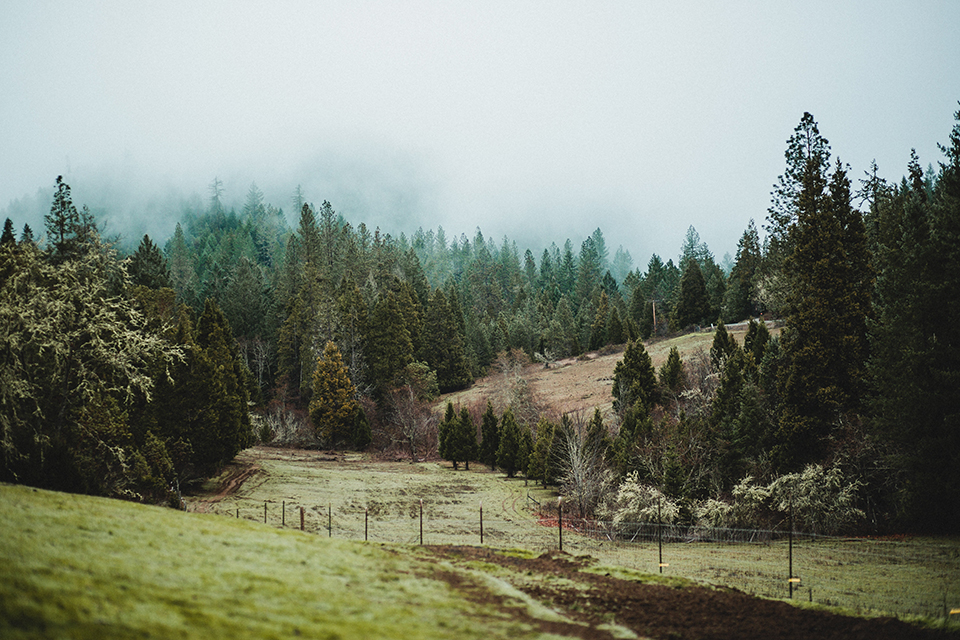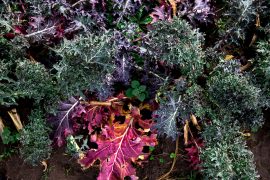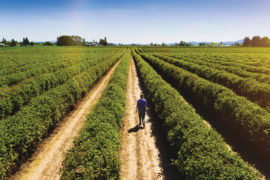Easy living at Pachamama Farm
written by Sophia McDonald | photos by Bradley Lanphear
When you first step onto Michael Antoci’s pig farm in Days Creek, it’s eerily quiet. Light shines through the stands of fir trees, producing a heady scent of pine. A shaggy white dog strolls around a cedar-shingled barn, but there are no other signs of life.
Then a call rings out: “Sooey!” Nearly a hundred pigs come racing out of the trees and into the barn. They thrust their heads into troughs and scarf up the slop Antoci has mixed for them. When it’s gone, he shakes a rattle and cries out again: “Hip hip hip.” As fast as they appeared, the animals vanish into the trees.
This scene plays itself out twice a day. The rest of the time the pigs are left to forage for roots and nuts or relax in “pig palaces” built from pallets and other salvaged materials. This easy living is very much by design. “Stress is a key indicator in the pH and quality of the meat,” Antoci said. “The stress-free environment from birth to harvest is one of the keys in creating a holistic product.”
Raising happy animals that produce the best-quality meat was Antoci’s goal when he left the restaurant industry in California. Ready to leave the pollution and overpopulation in his home state, he started looking just across the Oregon border for farmland. In Jackson and Josephine counties, marijuana growers were driving up the cost of land, so he went north to Douglas County, which doesn’t allow pot growers. That’s where he found the 110-acre plot that would become
Pachamama Farm.
Pachamama’s Oregon local feeding solution
Antoci planned to raise pigs, sheep, goats and turkeys. Pigs became the focus when he found an optimal source for their slop: Umpqua Dairy and Franz Bakery products nearing their expiration dates. Every Saturday, he takes a truck to their warehouses and picks up thousands of pounds of ice cream, milk, bread and other nutrient-dense discards.
This system helps the producers shrink the amount of food they send to local landfills. It also allows Antoci’s Berkshire, Gloucestershire Old Spot, Red Wattle, Mangalica and other old-world hog breeds develop rich, marbled muscle that high-end markets and restaurants clamor for. “These are the original red meat pigs that were common before the ‘Other White Meat’ campaigns in the 1940s and ’50s came in to try to save the pork industry,” he said. “Suddenly people didn’t want lard pigs, they wanted pigs for bacon and lean meat.” The pendulum has finally swung back. “Now everyone wants fatty, Kobe-style pork.”
In addition to reducing food waste and saving heritage breeds, Antoci is fiercely committed to protecting small family farms and fighting off the ills of industrial agriculture. He’s helped a few locals find markets for their pigs and is working to put together a co-op so they can get a fair price for their meat.
He sees these actions as the best way to protect consumers against monocropping and other problematic practices that exist even on some organic farms. “Our food is no longer in our hands,” he said. “Small farms are the only way for America to keep genetic diversity within our hands. Without that, if something were to happen within the common breeds, we wouldn’t have the genetic diversity to fight off a disease. That’s what’s so important about small organic farms—we are protecting the food system in many ways.”
Oregon pig farming at a glance
Oregonians raise about 3,000 pigs every year, putting the state thirty-fifth in total pork production. One of the reasons the number is so low is that Oregon lacks a major feed crop such as corn or soybeans.
The other challenge facing those who do raise pigs is the shortage of processing plants. “As we see more of these little niche market producers get into the business, the lack of USDA-inspected facilities really makes it difficult for them to expand,” said Gene Pirelli, a professor at Oregon State University’s Department of Animal and Rangeland Sciences and an Extension Service agent.
Should you be lucky enough to procure some farm-raised Oregon pork, one option for cooking it is to slow roast it into tender, saucy Kahlua pork from Wild Pear Restaurant and Catering in Salem. Co-owner Jessica Ritter serves it on a cheddar-onion bun with ginger-lime slaw and marionberry barbecue sauce.
For something simpler, grill pork belly for a classic BLT. This recipe from Paul Naugle at the Steamboat Inn in Idleyld Park starts with a coffee cumin cure on the pork and ends with fresh tomatoes, crisp lettuce and a lemon-spiked aioli that add layers of texture and flavor.


